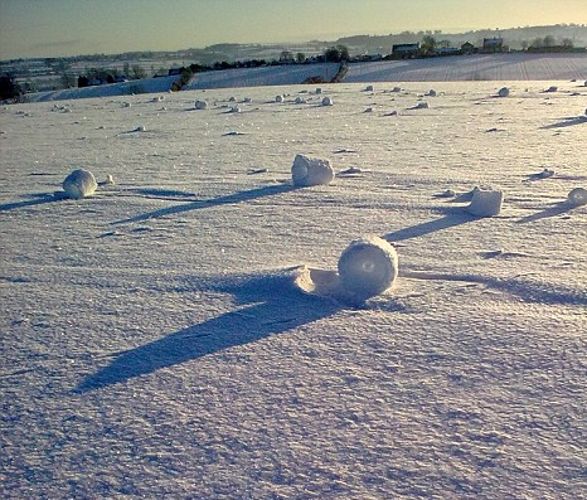
Man Made Snow Art
Making a snowman is a fun activity for kids, but there are some artists who never outgrew their childhood passion for making figures out of snow. Around the world, winter festivals bring these snow artists together to compete for prizes and appreciation.


Above: Clean curves and straight lines make this snow sculpture a winter art masterpiece. The artist's attention to detail gives the sculpture a unique appeal. Each window and door has been carefully shaped, and trees, stairs and decorative architectural elements have been added to complete this artwork.

Above: Large snow sculptures make impressive, imposing statues. Snow art is short-lived. In colder climates, snow sculptures can last for a few weeks, but at the end of winter these snow statues become nothing but a wet patch, a few memories and a handful of photographs.

Above: Snow sculptors often model man-made objects or human subjects. For some reason snow creatures such as penguins, polar bears and seals make a rare appearance in snow art.
Nature is the most skilled artist in the world, creating incredibly detailed creatures, environments and natural wonders such as these natural snow artworks.

Above: A snow rose, sculpted by the wind.

Above: Wind creates a variety of different snow sculptures. These snow rolls were formed in strong wind situations, when the temperature dropped below zero. They are winter's equivalent of tumbleweed.

Above: A combination of heat and extreme cold in thermal basins create a velvety snow coating for these rocks, transforming them into winter curiosities.

Above: This type of snow formation is found at high altitudes and is called snow penitents.

Above: A combination of weather elements creates a textured snow carpet in the Yellow Stone National Park.

A snow covered beech tree becomes a fantasy artwork in an other-worldly environment.

Layers of snow piled on uneven rocks create a detailed, organic sculpture.
Read More on Art-Sci:
 Celebrity Optical Illusions
Celebrity Optical Illusions  Contraceptive Fashion: Condom Clothing
Contraceptive Fashion: Condom Clothing  Painting with Pizzas, a Food Art Gallery
Painting with Pizzas, a Food Art Gallery


Posting Komentar
Posting Komentar